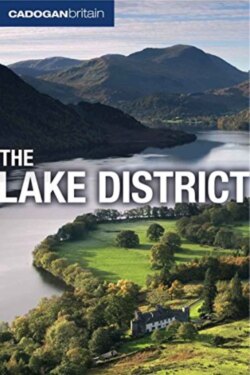Читать книгу Britain: The Lake District - Vivienne Crow - Страница 30
На сайте Литреса книга снята с продажи.
The Romantic Era
ОглавлениеThe Romantic movement of the late 18th and early 19th centuries really put the Lake District on the map with several writers and artists clearly moved by what they saw.
The most famous and influential of the Lakeland poets of this era was undoubtedly William Wordsworth, the only one to have actually been born in the county (see here). His Lyrical Ballads, written in 1798, convey to the reader his preoccupation with the powers and mysteries of the natural world, what he could see all around him in his native county, as well as his love of rural life.
It was Wordsworth who introduced his friend Samuel Taylor Coleridge to the area, via a walking tour starting at Temple Sowerby in the east and finishing at Wasdale Head in the west. Coleridge fell in love with the place and, although he wrote relatively little poetry about the Lake District, his letters and notebooks are full of impassioned descriptions of the scenery and his walks through it. His description of a climb on Scafell, in fact, is today regarded as a classic of climbing literature (see here).
Coleridge and his wife Sarah moved to the Lake District in 1800, living at first in Keswick’s Greta Hall (see here). They were soon joined at Greta Hall by Sarah’s sister, Edith, and her husband, Robert Southey, who was Poet Laureate from 1813 to 1843.
The influential trio – Wordsworth, Coleridge and Southey – received a host of visitors from the worlds of art and literature, thus passing on their love of the Lake District to the likes of Sir Walter Scott, Percy Bysshe Shelley, John Constable and John Keats.
Keats was clearly inspired. Following a walk along the shores of ‘Winandermere’ to Ambleside in 1818, he wrote, in a letter to his brother:
‘What astonishes me more than anything is the tone, the colouring, the slate, the stone, the moss, the rockweed; or, if I may so say, the intellect, the countenance of such places. The space, the magnitude of mountains and waterfalls are well imagined before one sees them; but this countenance or intellectual tone must surpass every imagination and defy any remembrance. I shall learn poetry here and shall henceforth write, more than ever, for the abstract endeavour of being able to add a mite to that mass of beauty which is harvested from these grand materials, by the finest spirits, and put into ethereal existence for the relish of one’s fellows.’
Writer and intellectual Thomas De Quincey was a friend of the Lake poets, and moved into Dove Cottage in Grasmere after the Wordsworths moved out. Best known for his work, Confessions of an English Opium Eater, first published in 1821, he said that Wordsworth’s poetry consoled him during episodes of depression. His friendship with his hero was short-lived, however; the alterations he made to the garden at Dove Cottage angered Wordsworth.
Shelley too lived for a while in Cumbria. Having eloped to Scotland at the age of 19 with Harriet Westbrook, he took up residence with his new wife in Keswick in 1811. It was here that he wrote his first long serious work, Queen Mab: A Philosophical Poem, a revolutionary ‘fairytale’ presenting an image of a future utopian society. He didn’t stay in the district long; by 1814, he had abandoned his pregnant wife and child and run away with Mary Wollstonecraft Godwin, later known as Mary Shelley, writer of the best-known of Gothic novels, Frankenstein.
The two great English landscape painters of the time, Joseph Mallord William Turner and John Constable, both spent formative stays in the Lake District. Turner’s early work includes a dark and sombre view of Buttermere. Currently on display in the Turner Collection at London’s Tate Britain, it was painted after a visit to Cumbria in 1797. A 30-year-old Constable spent nearly two months touring the Lake District in 1806. Although he told a friend that the solitude of the mountains oppressed his spirits, he managed to paint more than 100 scenes during the trip.
